The day started, as most recent days have started, grey and drizzly. It didn’t look at all appealing. It wasn’t that cold but the grey just made it miserable. Still, we had decided to go into Nora and walk along the lakeside path, so we packed up the puppies and drove into town.
And it wasn’t long before the sun came out, the grey went away and the blue sky was revealed. Combined with the new warmth, it was a wonderful day to be outside.
There’s a group of steam train enthusiasts at Nora. They have a station, a few carriages, track and engines. It’s at the beginning (or end) of the lakeside walk and we started there.
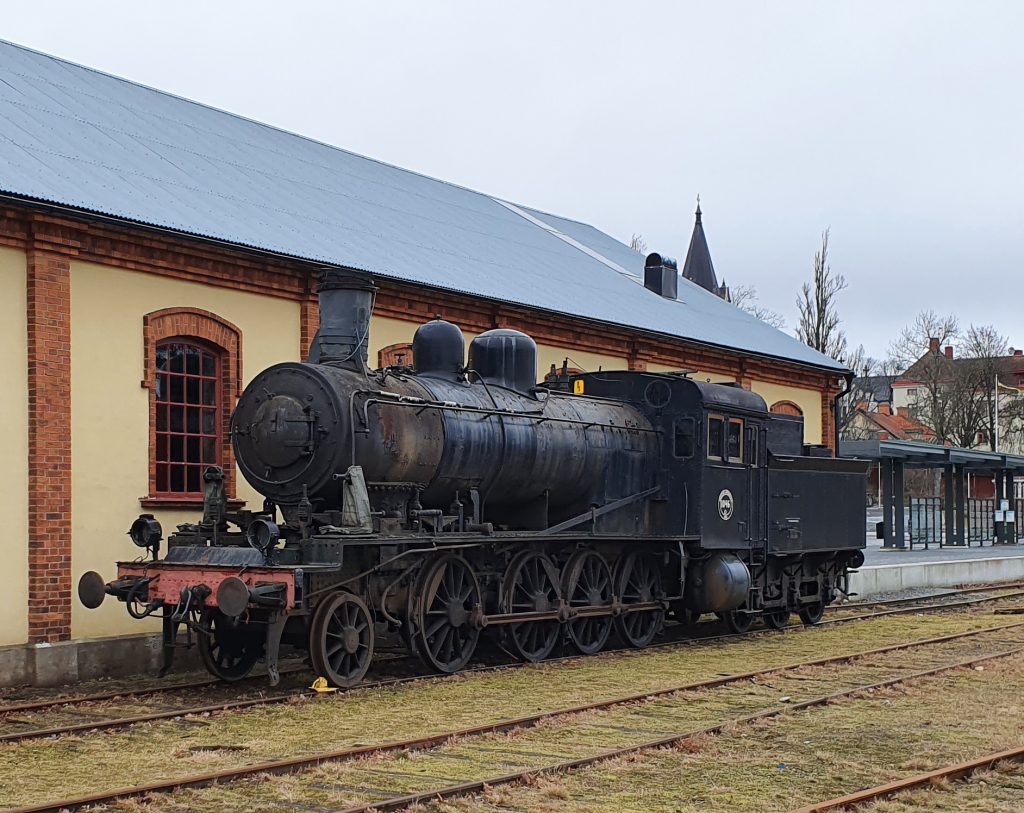
Walking down to the railway, the first normal gauge railway in Sweden, we noticed how many tourist type places are currently closed. This has nothing to do with the plague. Places like Nora close for the Season every year. They change from sleepy old towns into crowded visitor ridden places every summer. While it’s far more pleasant this time of year, there’s little to do and, unfortunately, there’s none of the famous Nora Glass.
Nora Glass, for the uninitiated, is a small business, started in 1923 in the (almost) centre of town. It makes ice cream, fresh every day. Three flavours, every day: Vanilla, hazelnut and one other, determined each day. It is also available at two other places in town. But not this time of year. Given my love of ice cream, this is very sad.
There’s also a historic house and garden to visit. But not this time of year, which made Mirinda sad. And, of course, the railway and attached museum.
So, that’s a list of things we didn’t do today. We did walk along the lake and find the bust of Maria Lang though.
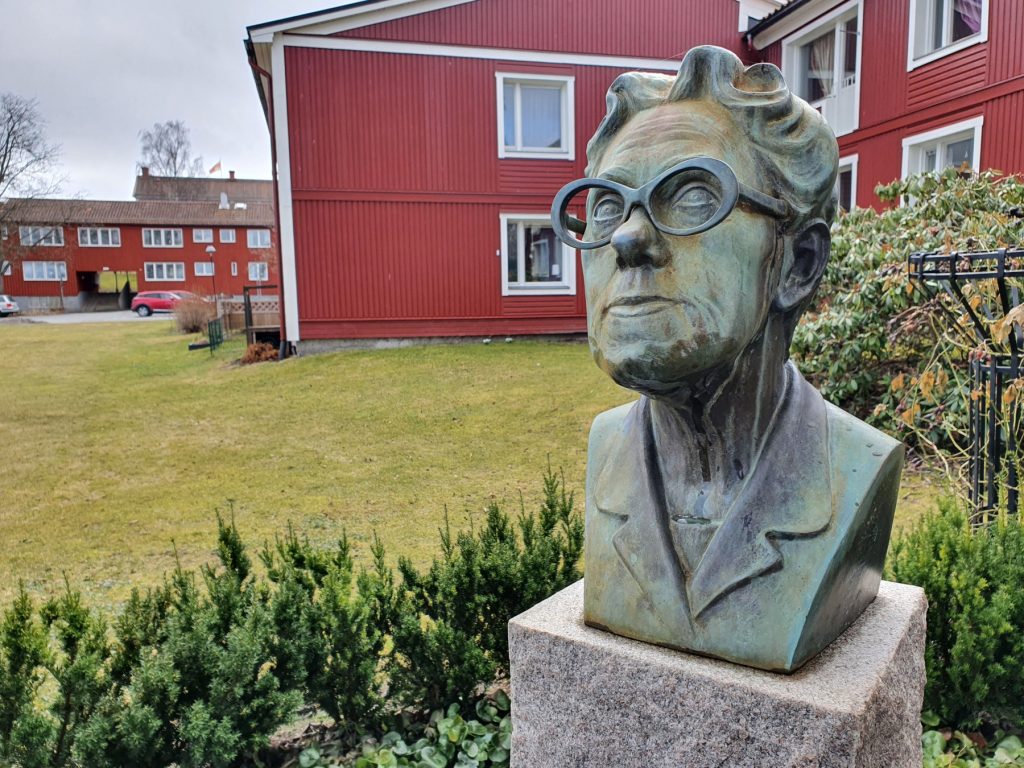
Born in 1914 as Dagmar Lange, she was a prolific writer of murder mysteries, much like Agatha Christie. She wrote either 42 or 49 novels, depending on what information you read, and is credited as being the first Swedish writer of detective fiction.
She was born in Västerås (the place that Ryan warned us about in The Hairy Pig), but was moved by her parents to Lindesberg before she was one. Then her father died and, after her mother remarried, she was moved to Nora which remained home for her. She died aged 77 in 1991.
Most of her novels take place in Skoga, a fictional town which was mostly based on Nora. Fans of her books and the movies adapted from them, come to Nora just to walk the streets and see the sights that she wrote about.
Presumably, Skoga has a lake for it to sit beside.
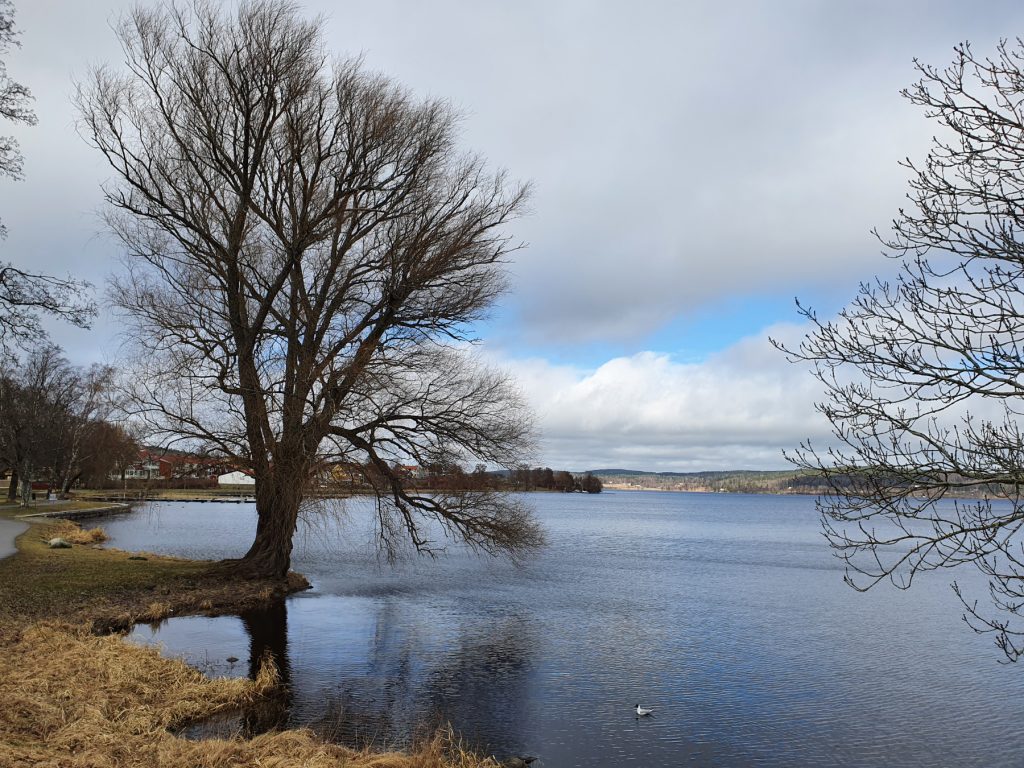
Having never read Lange’s books or even heard of the fictional town of Skoga, I have no idea whether it has a Greek Restaurant. But Nora does, and we returned there today to have lunch. Mainly because they allow dogs and also because the food is very good.
They serve a special lunch menu for 100kr. You choose an item from the list and that’s your lunch. We confused them a bit by wanting three for two of us. But it was soon sorted out and we had a very fine, food filling time.
The reason we had three meals was because this was going to be our main meal of the day. We were looking forward to a bord type supper (as Sarah would call it) so Mirinda went back to the Nora deli for some wonderful cheese, meat and Easter treats.
Rather than just head home, we stopped off at the big cemetery which we’ve driven by each time we go into Nora. It’s a beautiful sweeping landscape with little box walled off squares containing burial plots and headstones. There are gullies and a burbling stream. There’s a chapel with a detached belfry. There’s a lake for it to overlook.
It’s very peaceful. If the dead realised what was happening, they’d be well pleased with such a location for their eternal rest.
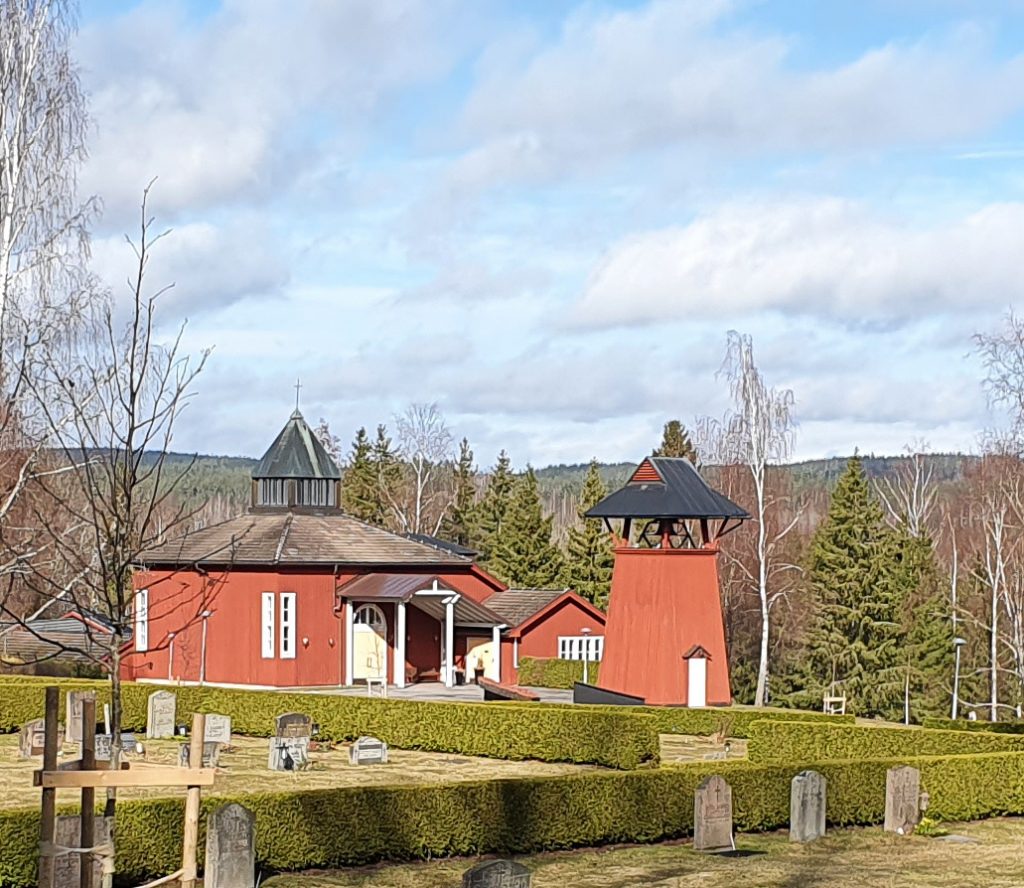
It’s one of three cemeteries in Nora. In town there’s the North and South Churchyards and, outside town there’s this, the Karlslunds Kyrkogård. And, while there’s a main road which runs beside it, it’s way more peaceful than the UNESCO World Heritage Skogskyrkogården which we visited back in November.
Opened in 1954 and enlarged in 1989, Karlsunds Kyrkogård sits up above Lake Norasjön (which is Lake Nora Lake in English) and the older part, according to the website, ‘consists of rectangular blocks located on terraces down to the lake.’ While the newer bit ‘has a more rounded shape with paved corridors.’ It’s all very beautiful and peaceful.
While we visited, a couple of groups turned up to tend the graves of their relatives. This is a big thing in Sweden. You can tell the graves that no longer have living relatives to tend them. They are overgrown and neglected.
Which reminds me, it’s not just final resting places that the Swedish people care about. It seems they go out of their way for everyone’s comfort.
I came across this attached to the side of a public toilet in Nora.
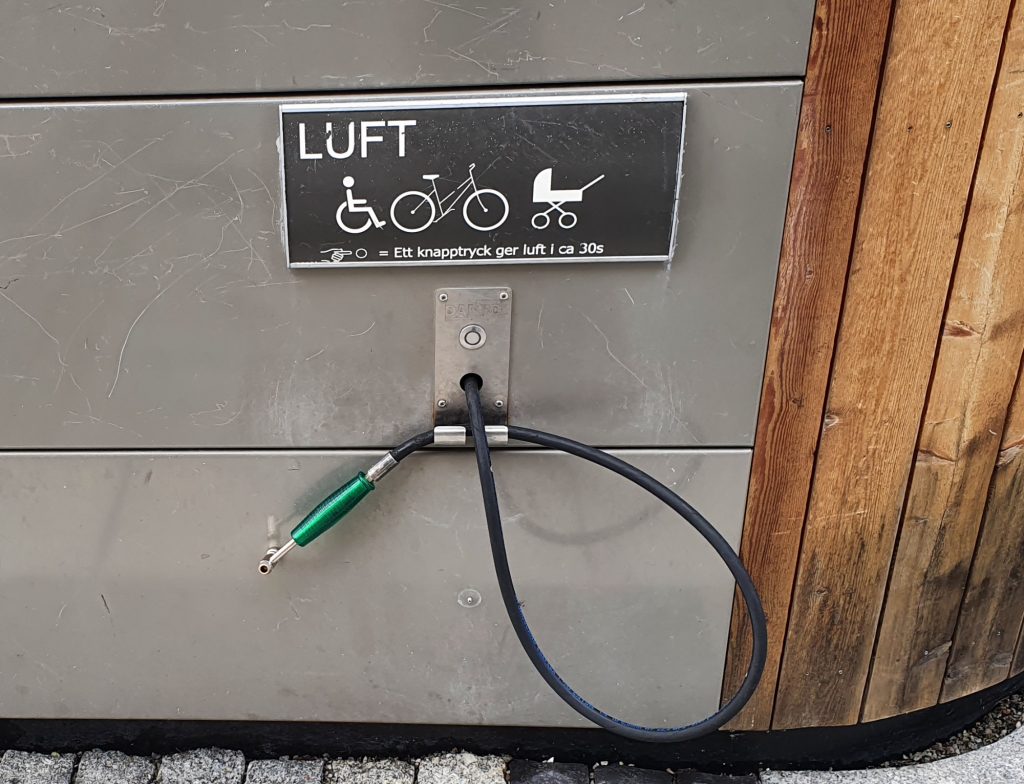
And, unlike the UK at least, the air is free.
Upon returning from our brief sojourn among the dead, we settled in on the outside terrace for a few hours of reading, gin and beer as the sun gradually disappeared and the temperature dropped.
What a splendid day it turned out to be. And supper was fantastic too.


